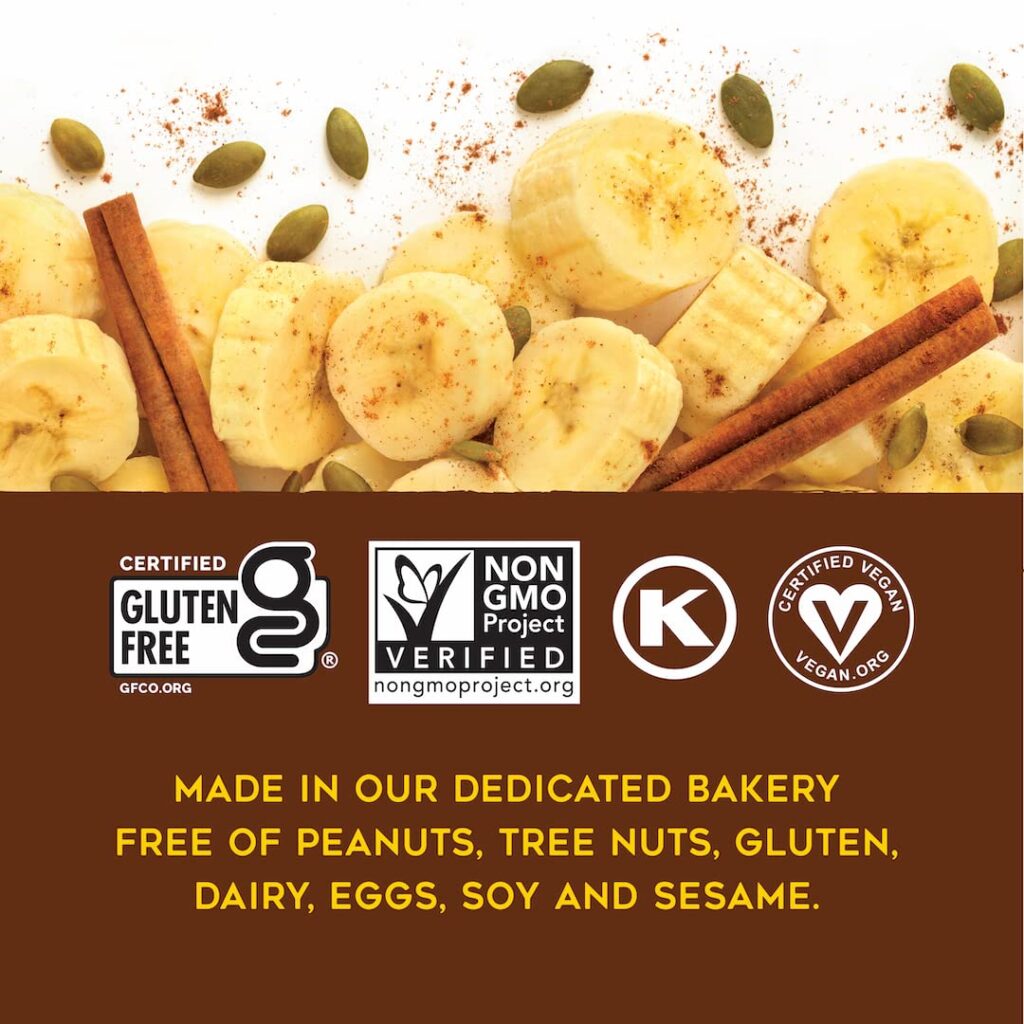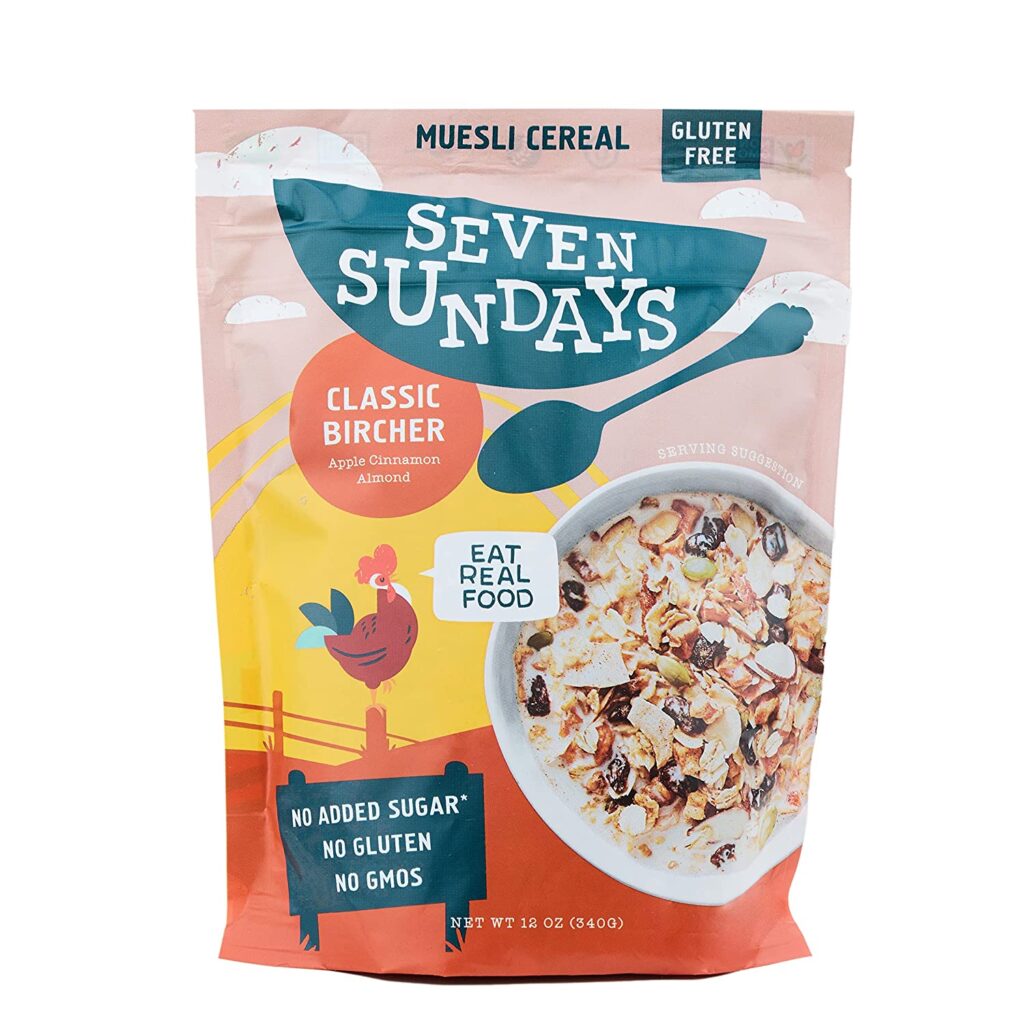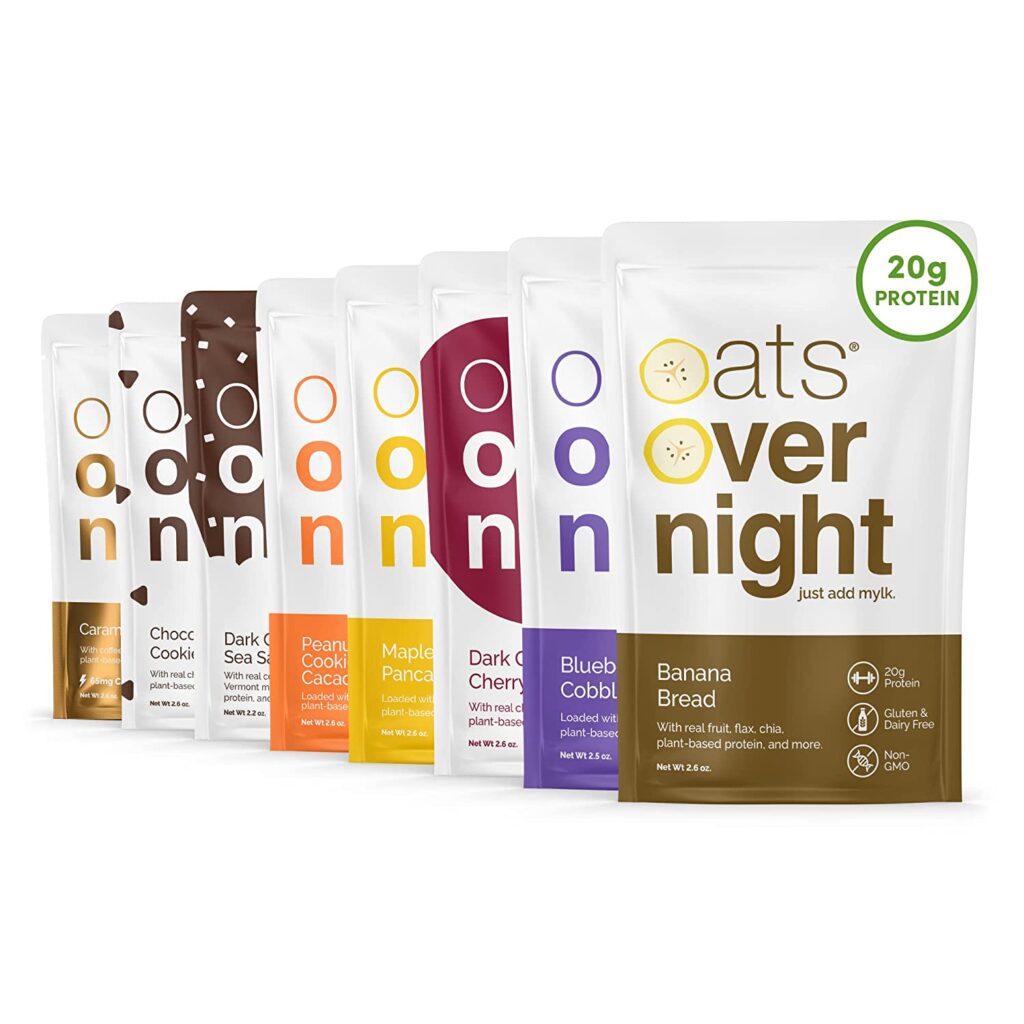Here are more suggestion On-The-Go-Breakfasts accordingly to an dietitian. Check them out.
Click Here to Read Part 1 of Best “On-The-Go” Breakfasts
This post contains referral links for products we love. Staying Fit With Aeran earns a small commission on these links at no cost to you, and the links will always be marked with an asterisk *.
Best Bagel: One Mighty Mill Whole Wheat Everything Bagel *
Pros
- Contains whole grains
- High in protein and fiber.
- There is no added sugar.
Cons
- Pricey for a bagel

Bagels from One Mighty Mill provide an excellent blend of nutrients, flavor, and texture. They are prepared in One Mighty Mill’s stone mills and are soft and not overly dense (a struggle with many store-bought bagels). They’ll keep you fuller for longer than your regular refined flour bagel, with 4 grams of fiber, 9 grams of protein, no added sugar, and 230 calories per bagel. They’re also a good source of iron, with 4.8 milligrams (around 25% of most adults’ daily needs).
To add some healthy fat and fiber, as well as a bit of lime juice and sea salt, we recommend topping your bagel with mashed avocado. Whole wheat bagels from One Mighty Mill are also available in plain and cinnamon raisin flavors, which mix wonderfully with your favorite nut butter.
Best Eggs: Nellie’s Sous Vide Egg Bites Broccoli Cheddar *
Pros
- High protein content
- Humane Certification
- Ready-to-eat
Cons
- They don’t have enough calories for breakfast on their own.
When you have a taste for eggs but don’t have time to make your own omelet, Nellies Egg Bites can come in helpful. These little frittata-style nibbles include 7 grams of protein per egg cup, so two bits (one box) can provide a nice protein boost for breakfast, which is not enough for breakfast on their own, with only 90 calories for each bite. We recommend mixing them with a slice of whole wheat toast and some fruit for carbohydrates and fiber to make a quick breakfast you can consume at work or before you leave.
They may be eaten cold or heated in the microwave or oven, making them an excellent choice for hectic mornings.
Best for School Breakfasts: 88 Acres Banana Bread Protein Bar *
Pros
- High protein content
- based on Whole foods
- Allergy-friendly
Cons
- There is added sugar in this product.
88 Acres are well-known for producing the top eight allergen-free seed butter and bars. Their protein bars contain 12 grams of protein derived solely from pumpkin seeds, as well as iron, unsaturated fat, B vitamins, magnesium, copper, and zinc. They taste so much like banana bread that it’s difficult to imagine they just have 4 grams of added sugar. With 260 calories, they may be sufficient for some children’s breakfasts on their own, but they can also be easily coupled with a glass of milk and a piece of fruit for a quick, balanced, and filling breakfast.

You may even include one in your child’s bag if they need to eat or have a snack on the run because they are nut-free.
Best Granola: Seven Sundays Classic Bircher Muesli *
Pros
- There is no added sugar.
- High in protein and fiber.
- Certified gluten-free,
- vegan
- non-GMO
Cons
- Not good for people who are allergic to nuts.
Many granolas, mueslis, and cereals have as much added sugar as a pastry, but Seven Sundays offer a delicious no-sugar-added muesli. For an on-the-go breakfast, serve it as a typical Swiss Muesli (akin to overnight oats). If you have more time, serve it topper for your favorite yogurt or as cold cereal for a filling, nutritious breakfast. Sprinkle with blackstrap molasses, maple syrup, or honey to add some sweetness.

For 250 calories, one half-cup serving offers 8 grams of plant-based fat, 6 grams of fiber, and 9 grams of protein, so mixing it with yogurt or milk and some berries or diced apple creates a wonderful breakfast that will keep you active.
Best High Protein Breakfasts: Oats Over Night Oatmeal *
Pros
- It can be consumed as a shake or in a bowl.
- Pea protein or whey protein as a foundation
- Gluten-free
Cons
- More costly per serving
Oats Overnight Oatmeal has 20 grams of protein per serving and is a delightful and high-protein alternative! The adaptability of this product is what makes it so appealing for one of those “on the go” breakfasts; it can be drunk as a drink on the go or mixed in a bowl like a typical cup of oats. Simply combine it with your preferred milk and enjoy!
Each packet begins with rolled oats and whey or pea protein as the foundation, then a variety of natural ingredients are added to produce distinct flavors. Chia and flax seeds are frequent ingredients in these packages, helping to increase fiber content to six to seven grams per serving.
The majority of the varieties have little to no added sugar (about two grams), but others have seven or more grams. You can select numerous flavors, including plant-based ones, based on your nutrient needs and preferences. Banana bread, cinnamon rolls, and s’mores are all favorites.

What to Look for in Quick Breakfasts That Meet Your Taste Preferences
Perhaps most essential, your breakfast should be something you look forward to eating. Whether you favor sweet, savory, or anything in between, pick breakfasts with flavors and textures you enjoy so you’ll want to eat them. Do you dislike conventional breakfast foods? Think beyond the breakfast box—just because something isn’t advertised as breakfast food doesn’t mean it can’t be eaten in the morning.
Contains an Appropriate Number of Calories
Calories are energy for our bodies, and consuming too few calories for breakfast may have the opposite effect.
The calories you need will vary depending on your specific demands and may even change from day to day depending on how much you ate the day before, your sleep, and your activity levels. “Many pre-packaged breakfast items contain far too few calories.” “You want to choose something between 350 and 500 calories,” Gorin advises. However, some people may require much more. To increase calorie and nutritional intake, many people combine breakfast alternatives or add something to their on-the-go options.
Protein
Protein helps to maintain stable blood glucose levels and satiety, which means you’ll have enough energy to get through the morning. To gain these benefits, aim for at least 15 grams of protein at breakfast. Protein can be found in both animal and plant-based foods, such as eggs, milk, yogurt, beans, tofu, almonds, seeds, meat, and fish. Many whole grains contain protein, which can range from three to nine grams per meal.
Carbohydrates
Carbohydrates are our body’s primary (and preferred) energy source. Fruits, vegetables (particularly starchy vegetables like potatoes and corn), beans, milk, and grains all contain carbohydrates. The amount of carbs you need for breakfast will vary depending on your total energy and carbohydrate requirements, as well as your activity level.
Whole grains, fruits, vegetables, and legumes all include fiber. Fiber is an important component of breakfast since it helps maintain balanced blood sugar and energy levels throughout the day. Most carbohydrate-rich foods also provide vitamins and minerals, providing an opportunity to supplement your diet.
Fat
You should think about the amount and type of fat in your breakfast dishes. According to the USDA Dietary Guidelines for Americans, unsaturated fats from plant-based sources like nuts, seeds, avocado, and plant-based oils such as olive oil should be prioritized, whereas saturated fat should be limited to less than 10% of total calories. Common morning items like yogurt and eggs contain some saturated fat, but they also contain a variety of other helpful nutrients, so don’t always go for the lowest-fat option; instead, examine how each dish fits into your day.
Fiber
Fiber aids in digestion, may decrease cholesterol and may increase blood sugar stability. It has also been proven to make you feel fuller at meals. Choose fiber-rich carbs like whole grains, beans, legumes, fruits, and vegetables for breakfast rather than refined grains that lack fiber. Gorin suggests aiming for at least 3 grams of fiber per day, but preferably more.
To Conclude ” On-the-Go” Breakfasts
What is a nice recipe for a quick on-the-go breakfasts?
One of the best on-the-go meals is Overnight oats because they’re inexpensive and easy to prepare the night before. For a basic recipe, combine rolled or quick oats, chia seeds, yogurt, and milk. Then you may add any flavors and garnishes you like, such as vanilla, cocoa powder, cinnamon, nut butter, almonds, hemp seeds, and fruit. If desired, sweeten with honey or maple syrup.
What breakfast on the go should I avoid?
We believe that all meals can be included in a healthy diet and that it is more important to evaluate your overall diet than any single meal. If you’re frequently on the go for breakfast and want to support your health, restrict options that are highly processed and have a considerable amount of added sugar, refined oils, sodium, and saturated fat.
Many frozen breakfasts like sandwiches, burritos, pancakes, and waffles include an excessive amount of these ingredients. You should also minimize selections that are mostly refined carbs, such as pastries, doughnuts, and many muffins because they are less likely to give sustained energy and may cause you to feel hungry soon after eating.
A healthy meal, on the other hand, combines protein, fiber-rich carbohydrates, and fat to support sustained energy throughout the morning. Consider breakfast to be an opportunity to add nutrition to your day while also providing the energy you require in the morning. Fiske suggests combining dishes for long-lasting energy and including some colorful fruit.
